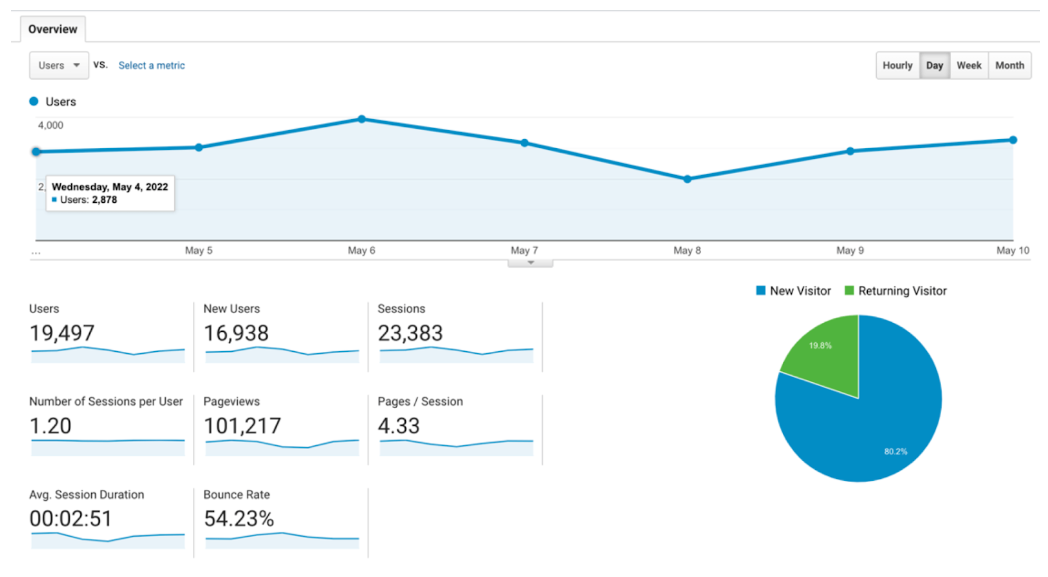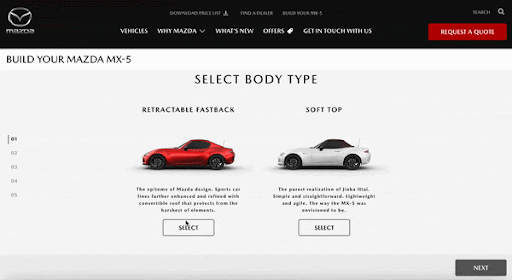Your Free SEO Checklist for 2022
Table of Contents
Basic SEO Checklist: Set up your toolbox
Content types: Develop a variety of SEO content
On-Page SEO Checklist: Make Every Page Count
So you have a website, your brand's dwelling place on the web. Great job! The work doesn't stop when your website goes live, though.
Think of it like moving into a new house, which doesn't end the moment you move your bulky furniture inside. Moving in marks the beginning of home improvement projects, like organizing drawers and keeping them clean.
You want people to easily find your site when they search online. Search engine optimization (SEO) can help you do just that, so your brand can enjoy increased awareness, site traffic, and revenue.
Are you looking for an SEO checklist template for your website? You're in the right place. This free SEO checklist can help make your website more discoverable to search engines and future customers. Keep reading to learn more!
Request a Free QuoteBasic SEO Checklist: Set up your toolbox
Like home-improvement projects, SEO is a long-term pursuit, so it's best to set up these tools that you'll use in the long run.
1. Google Search Console
Google Search Console is a free tool that gives you insights into the keywords your website ranks for in search results. This helps you measure your site's performance - and because what gets measured gets improved on, you can take the next steps to boost your rankings.
2. Google Analytics
Another free tool, Google Analytics tells you how many page views, visits, and unique users your website gets. It also lets you in on where this traffic came from - a Google organic search, social media network, or other websites.
Google Analytics can tell you how engaged your visitors are with your site: How much time did they spend on a page? Which pages have high bounce rates?

Keyword Research Checklist: Strengthen Your SEO Backbone
Keywords are the backbone of every SEO project. What are the relevant keywords that potential customers are using to find your products or services? Create a list of these keywords, which are preferably specific to your industry and are composed of about three words. These specific keywords are called long-tail keywords. While long-tail keywords have lower search volume than broad keywords, they bring high-quality users who are likely to convert on your site.You can also use keyword research tools like KeywordsFX to identify valuable keywords and search trends. Use this guide on keyword research to have a solid foundation for your SEO project.
You can also use keyword research tools like KeywordsFX to identify valuable keywords and search trends. Use this guide on keyword research to have a solid foundation for your SEO project.
Content types: Develop a variety of SEO content
One of the benefits of home improvement projects is having an orderly living space, with each room having the right furniture pieces. Meanwhile, curating a list of content types, which are your furniture pieces in SEO, will make "lounging" on your site a pleasurable experience for visitors.
Remember that while SEO involves making sure search engines can find and crawl your website, SEO puts equal importance on user experience. Make sure visitors find your content informative, useful, and engaging. They will come back to your website and engage with your pages, and search engines will notice that your website provides value, giving you ranking points in SERPs.
Here's a list of different content types you can explore using on your website.
Blogs
Conversational and friendly, blogs are content you can use when you share information and the latest news with your visitors.
Because the tone is less formal, blog posts are engaging and can draw out comments from readers. This creates conversations with your audience and gives you feedback on what other blog posts they're interested to read in the future.
Say your brand offers pet accessories and crates. You can write a blog post about the benefits of crate training your puppy.
Evergreen Content
Evergreen pieces do not have expiry dates, so they make great SEO investments. You can share these stories on social media multiple times. You can link them in newer blog posts. Evergreen content can also earn backlinks years after they've been published.
Some examples of evergreen content are glossaries, FAQs, and how-to guides.
While we're still not over home projects yet, a sample evergreen content is how to baby-proof every room in your house. This how-to topic is timeless. Online visitors who come across this story five years from now will still find the tips useful. You can also update this story as you come up with new helpful ideas!
Videos
The average attention span of an Internet user is eight seconds. This makes it challenging to hold onto your site visitors' focus. They might bounce off your page instead of scrolling down.
One way to keep them on your webpage is to summarize a blog post or evergreen content into a video version and strategically embed it in the original story it was based on. This provides extra value to your readers, and you get the messages of the original article across!
Infographics
Another attention-grabbing and easily digestible type of content, infographics can complement an evergreen content or blog. It summarizes key points with visuals that aid readers to remember your messages. Include them in blog posts or evergreens, so your visitors can easily commit to memory the key takeaways from your content.
White papers, ebooks, or market research results
Whitepapers, ebooks, and market research results are longer and more in-depth than blogs and evergreen content. They are powerful tools for lead generation, and they can establish your authority and trustworthiness about industry topics.
Because they offer value to your audience, consider publishing whitepapers, too.
Not sure what to write about? Here are some tips to help you come up with whitepaper content ideas.
Interactive content
Interactive content is one of my favorite types of content. I'd spend time answering Harry Potter quizzes (for fun) or use free tools like mortgage and loan calculators (because that's what adults do). This type of content invites users to give input, instead of just reading text or watching videos on a page.
Developing this type of content takes time and resources to plan and develop. Because of their engaging nature, they're highly shareable on social media. They are also easy to link to from other relevant pages on your site (a plus in SEO)! These useful tools can easily score backlinks from other websites too.
An example of interactive content - this car-shopping tool by Mazda Philippines puts visitors in the driver's seat by letting them build their own cars. It's a handy tool for visitors shopping for their customized roadsters!

On-Page SEO Checklist: Make Every Page Count
You have your SEO tools ready. You've done your keyword research. You have a variety of content ideas for different types of content. Now, let's make every page on your website count with this on-page basic SEO checklist.
1. Use your keywords in your page title tags, meta description, and headers
Your title tags and meta descriptions appear in SERPs, so write them in a way that entices searchers to click on them.
To further help your ranking, front load your core keyword in your page title tag. This means crafting your title tag with your keywords in the beginning, so searchers can spot your content to be relevant.
Use your keyword in the most natural way possible in the meta description since Google displays the search terms in bold.
2. Optimize your images
You can do this by naming your images with relevant keywords and adding alt tags to describe what the image is about. This makes it easy for search engines to identify what the image is about.
You'll also need to make sure the image file size doesn't affect your page load speed.
3. Mind your page load speed
Users expect pages to load in three seconds or less - a second more, and they'll bounce. Search engines aren't likely to recommend pages with high bounce rates.
4. Add relevant internal links
Add links to relevant pages within your site, so your visitors can easily find related content. Think like a reader: What other content could they be interested in after viewing this current page?
Your best next step: Get started with SEO!
Help potential customers find you and your website by getting started with SEO. Download an on-page SEO checklist or use a free SEO Checker tool to get started.
Contact Us!
